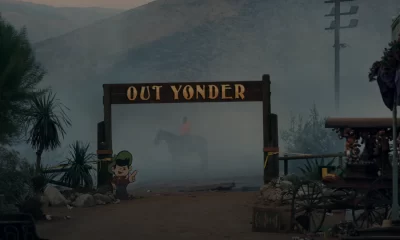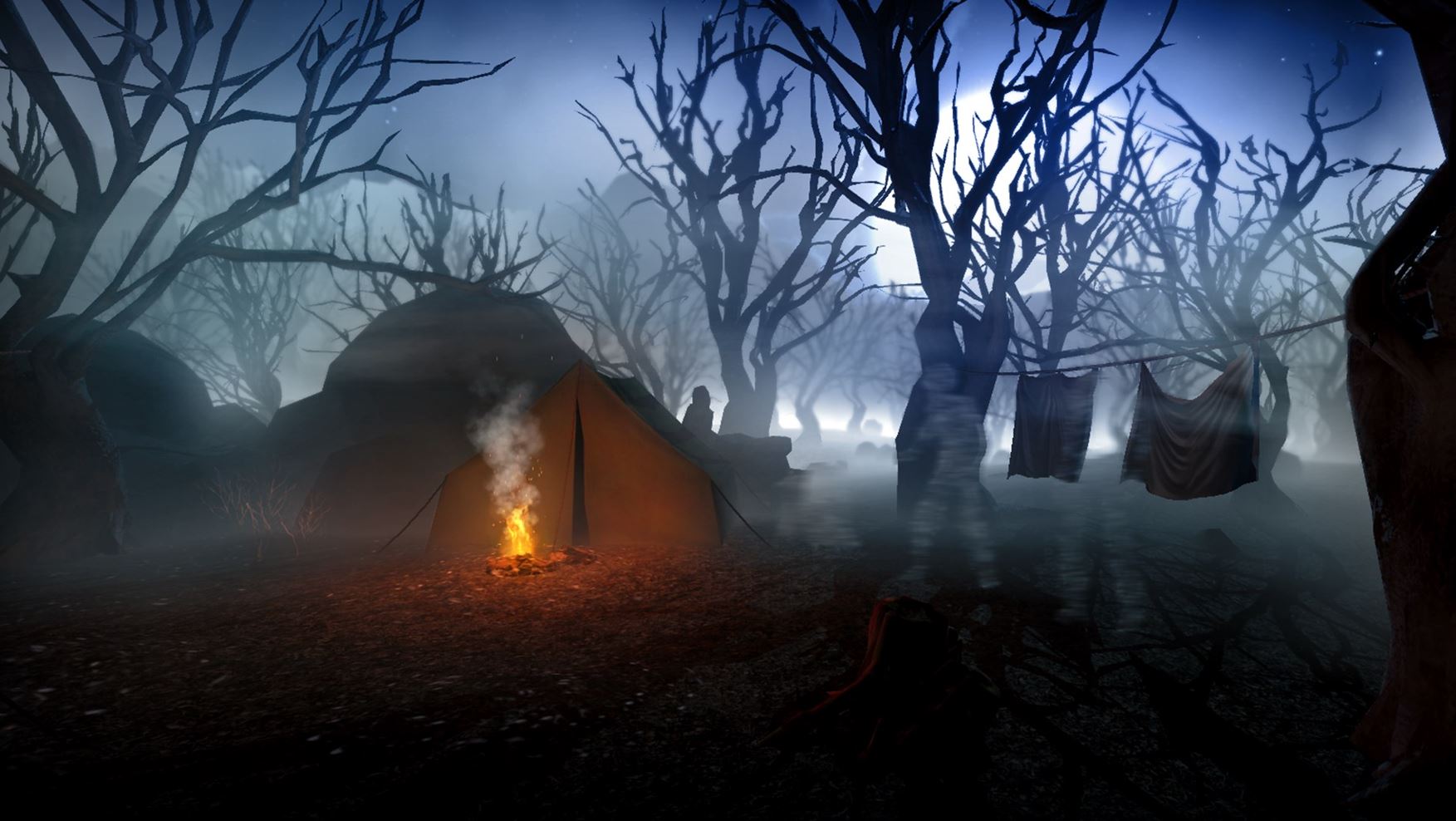
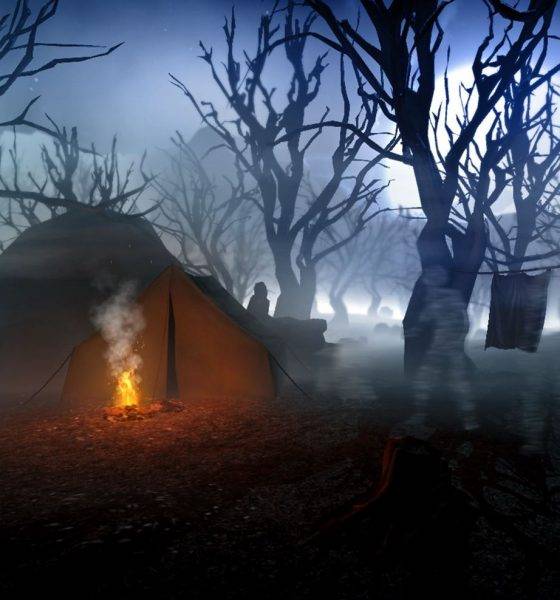
Editorials
The 3 Most Mysterious Disappearances in National Parks
Every year, hundreds of people go missing in US national parks, let’s talk about the most disturbing ones…
Every year, hundreds of people go missing in US national parks. While most of these disappearances result in answers for what happened to these individuals- be it accidental falls, getting lost, or animal attacks- there are still many more cases in which the disappearances cannot be explained. Author and former police officer David Paulides has researched into this strange phenomena in his series entitled Missing 411. Now spanning 10 books and two documentaries, Paulides’ work illustrates the unexplained disappearances of more than 1,100 individuals, many of whom didn’t leave a shred of evidence behind. These cases defy logic and have left investigators with more questions than answers. Here are three of the most mysterious and chilling disappearances throughout the history of the national parks.
Charles McCullar

In 1974, 18 year-old Charles McCullar decided to take a cross-country trip, leaving his home in Virginia to travel and take photographs of the country. He was known to be an experienced outdoor enthusiast, taking hiking trips to take photos of the wildlife and natural beauty of the land, particularly in the American Northwest.
A year later, in January 1975, McCullar was drawn to Oregon’s Crater Lake National Park. Located within the majestic Cascade Range, the land is dominated by lush forests, fields of wildflowers, and soaring mountain peaks surrounding the deep, clear blue lake. A perfect location for hikers and photographers alike. He had told friends and family that he would be there for two days, and from his experience none of them thought anything of it. That was, until, Charles never surfaced from the park after the third day. The police were called and a search and investigation was soon underway.
A few people reported seeing McCullar before his disappearance, including a park ranger who claims he gave McCullar a ride and dropped him off at the trailhead where he planned to hike. Some witnesses claimed they saw Charles headed out hiking along the North Road, which struck them as strange since there had been roughly 5 feet of snow along that route at the time. It was thought that he may have changed trails after running into the thick snow, but no one knew for sure, and there was no sign of him or his campsite in the area.
A major search was launched into the wilderness beyond the trails, including help from the FBI, but investigation was continually hampered by the weather, which included drifts of snow as high as 12 feet in some areas. Charles’ own father even flew out to join in the search efforts, staying throughout the summer camped along the shore of the lake. However, even as the weather warmed and the snow melted, no trace of Charles could be found. It seemed as if the forest had simply swallowed him up.
Adding to the mystery, it’s commonly known for the FBI to only insert themselves in investigations of missing children or if there is suspected kidnapping or foul play involved. There was no evidence to suggest that Charles had met with any foul play, as there was physically no evidence at all, so it’s often questioned why the FBI got involved in the first place. If this was simply the case of a man getting lost on a hiking trip, what was the FBI assisting with?
Nearly two years after he went missing, in October 1976, two hikers found McCullar’s backpack in the woods, about 12 miles from where he was last seen being dropped off by the park ranger. A search was launched in the preliminary area and soon Charles’ remains were found in a nearby creek. What was strange was that his jeans and socks were found upright on a nearby log with no other articles of clothing. Being that he had gone missing in the winter, it was unknown why his jacket, shirt, and undergarments were unaccounted for.
Even more bizarre, inside the socks were found remains of feet bones, and shin bones were found inside the jeans, while the rest of Charles’ skeletal remains were found 12 feet away. None of the rest of his equipment, boots, or anything was ever found.
The area in which Charles was located was an extremely remote, off-the-grid area which was difficult to access even during the summer. It was unknown how or why he would find himself in that area in the middle of winter when the entire area was essentially covered in snow and ice. To this day we don’t know what compelled Charles to climb to his icy grave, or what exactly put him there.
Dennis Martin
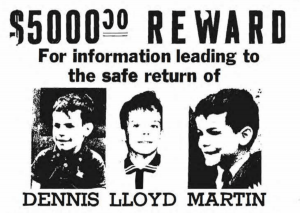
In June 1969, William Martin brought his two young sons, Douglas and Dennis, and his father, Clyde, on a camping trip to the Smoky Mountain National Park for Father’s Day Weekend. The family were no strangers to camping and hiking, taking regular trips while the boys were young. 6 year-old Dennis managed to keep up with his father and grandfather on his very first overnight camping trip. The group met with family friends on the second day and continued to Spence Field, a highland meadow in the western Smokies, popular for its views.
Dennis, Douglas, and the other young children on the trip decided to play a prank on their parents. Just a simple trick of hiding behind trees or bushes and jumping out to surprise them on the count of three. Many of the adults were keeping an eye on them as they set this up, including Dennis’ father who claims he only took his eyes off of Dennis when the boy went behind a tree, recalling that his red shirt stood out against the greenery. However, when all the children jumped out to the delighted giggles of their family, Dennis did not.
Thinking he was simply hiding, William walked around to the tree where he last saw his son, but he was nowhere to be found. He started calling for Dennis, but there was no response. Immediately he and the other men began searching the area but there was no trace of Dennis. They eventually tracked down a ranger station to ask for help, but that night a thunderstorm rolled in, covering the area in three inches of rain, washing out the trails and any evidence of Dennis.
The next morning the search commenced, swelling to around 240 volunteers looking for the boy. With no clear idea of where he was, the search party scoured out in all directions, covering as much of the park as they could. A week later, on Dennis’ 7th birthday, an estimated 1400 volunteers gathered to aid in the search. They included members of the Air National Guard, U.S. Coast Guard, and the National Park Service. Unfortunately, after nearly 13,000 hours of searching over 56 square-miles, there was still no trace of the young boy or what could have happened to him. It is believed that the number of volunteers may have hampered the investigation and accidentally obscured or ruined some evidence. All that was ever found were some footprints, believed to either be from Dennis or a Boy Scout leading to a stream, and a shoe and sock that Dennis was known to have been wearing at the time.
Time moved on and the family grew increasingly worried about finding Dennis alive. They offered a $5,000 reward for any information leading to their son’s whereabouts, an equivalent to over $40,000 today, but the only responses they gathered were from psychics claiming to know where he was. Unsurprisingly, this didn’t lead to anything. Weeks turned into months, which turned into years with no further information on Dennis’ disappearance, despite the largest search effort in the history of the Smoky Mountain National Park. Even half a century later, we still have no answers.
Interestingly, on the afternoon that Dennis disappeared, another hiker seven miles away from Spence Field known as Harold Keys claimed to have heard a “sickening scream.” When he looked up at where the scream had come from, he witnessed a large, unkempt, rough looking person running up the trail. The Park Service and FBI have concluded that there was not enough evidence to support these two instances being related, but could it be possible that someone, or something took Dennis on that fateful day?
Bessie and Glen Hyde
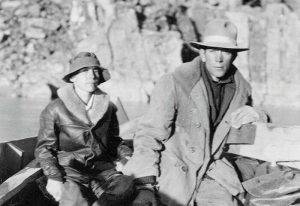
In 1928, newlyweds Bessie and Glen Hyde were honeymooning in the Grand Canyon National Park. The young couple decided to try running the rapids of the Colorado River which cuts through the canyon. Glen was experienced in river running, having traveled the Salmon and Snake Rivers in Idaho a few years prior. Bessie, on the other hand, was more of a novice, but an excited and eager learner. In fact, she would have been the first documented woman to have accomplished crossing the river.
However, it seemed the couple never succeeded. They set off from Green River, Utah where Glen had built his own boat, a 20-foot wooden scow, with which he hoped to set a new speed record for traveling through the canyon, as well as putting Bessie in the history books. It took them 26 days to travel from Utah to the Bright Angel trail at the heart of the canyon, where they reportedly stocked up on supplies before heading out along the South Rim. They were last seen on November 18, two days after they were photographed by Emery Kolb at his studio and home near the rim. Kolb warned them of the dangers of the trip, having extensively documented the canyon, and even offered them a place to stay during the winter if they wanted to postpone the voyage. The couple respectfully declined and set out for their adventure.
When December rolled around and the couple failed to reappear, a search party was launched, led by Kolb himself. Their boat was found along River Mile 237 upright with their supplies fully strapped in and intact, but there was no further trace of Bessie or Glen. The search uncovered evidence to indicate that the couple perhaps made it as far as River Mile 226, where it’s believed they made camp. Bessie noted in her personal diary that they had cleared 231 Mile Rapid, but no trace of the Hydes has ever been found.
With the romance surrounding the story and the lack of conclusive evidence, the case has garnered many theories and legends. In 1971 an older woman on a commercial Grand Canyon rafting trip claimed to be Bessie Hyde. She said she and Glen had gotten into an argument about continuing their trip. After he beat her, she stabbed him to death and left him there, escaping the canyon on her own. This raised questions, as the behavior described was highly unlike what was known about Glen. The woman later recanted her story. Additionally, the skeletal remains of a young man were found on the property of Emery Kolb in 1976, reportedly with a bullet hole in the skull. Later testing proved them to not be the remains of Glen Hyde.
Nearly a century later, we’re still no closer to knowing what happened to Bessie and Glen, or what would have made them leave their only form of transportation and all of their supplies. It is one of the longest unsolved mysteries in Grand Canyon history.
To this day the National Parks Service still does not have any definitive data on the people who go missing in its parks. Indeed, in most of these cases the individuals get out on their own accord or are otherwise found one way or another. However, this doesn’t account for the thousands of cases that still leave questions behind. Theories range from government cover-ups to wild cannibals living in remote areas of the parks, but no evidence has been provided to support any of these, so we can’t say for certain. One thing we can say is that this phenomenon can seemingly happen to anyone, from young children to the most seasoned outdoors-men, and it’s unknown how or why it happens.
If you’re interested in learning more about these types of strange disappearances, check out the Missing 411 documentaries, both available for free on YouTube, or read David Paulides’ book series, which focuses on many different places and topics.











